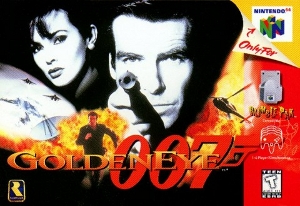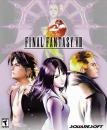As an arbitrary basis, I would say that a sleeper hit can be anything that launched to minimal sales and would go on to become much more hyped after launch and sell 25X more units than initially with a minimum of 5 million or more copies. This list shouldn't include launch titles that increased slowly due to limited launches - so while Super Mario 64 sold very few units at first, it still sold nearly 1:1 for N64 units sold. The list should also not include NES or older titles because most of that generation was before wide distribution of gaming media (mostly magazines and the Internet by the mid-90s).
As an arbitrary date, let's say January 1st, 1993. By that point, most gamers either had subscriptions or friends with subscriptions to gaming magazines, and the Internet was not far behind. Also, gaming TV advertisement had become reasonably well established as regular by this point. Also, this was around the beginning of the Internet era. Around this point, many gamers were either online at home or school, or knew some hardcore/1337 guy who was.
This list is VERY incomplete. Feel free to add, especially if you can find sales data. Some of them are very difficult to find.
Minecraft
Initial Sales: Miniscule (can't find specifics), it took 2 years to reach 1,000,000 sales.
How it gained hype: Early players would design huge superstructures and post them By year three it had sold 4 million copies.
Eventual sales: As of 2017 its sales sit at 121,000,000
Just Dance

Initial Sales: It launched with a peep with just 7,454 units sold.
How it gained popularity: People would bring the game out at parties, and it would be a hit because it would get girls dancing. More and more people began buying it, and by its third month on the market, it had surpassed 1 million sales. The summer and beginning of the University year saw a massive boom in sales, especially with the launch of its sequel in October. The Just Dance phenomenon would peak during the third year but then fade during the 4th and 5th, although the games still sell decently.
Eventual sales: 7,210,000 with sequels hitting 61,000,000.
Goldeneye 007 (N64)

Initial sales: 200,000
How it gained popularity: Most didn't consider as a potential big hitter due to its license-game status, but critics enjoyed some of the new mechanics it brought to the table: the sniper rifle, hit point reactions, audio-based stealth tracking, etc... It was the four player split screen multiplayer that allowed this game to thrive. This game became a favourite past time over the following years and kept the N64 going until Ocarina of Time, and even after people had stopped playing the benchmark Zelda title. It brought competitive multiplayer gaming to a new level, even surpassing the original Mario Kart. It remains one of the biggest local-multiplayer game phenomenons for home consoles outside of the Wii generation.
Eventual sales: 8,080,000
Pokemon
Initial Sales: 265,071
How it gained popularity: Pikachu.
Eventual sales: 31,370,000 sequels and spinoffs have sold 267,000,000. The brand popularity continues to expand to this day, 20 years after the initial launch of Pokemon. It exploded in popularity last year during the summer of Pokemon Go reaching hundreds of millions of new people and in older age groups. Pokemon Go holds 6 Guinness records including (From Wikipedia): "most revenue grossed by a mobile game in its first month (US$206.5 million); most downloaded mobile game in its first month (130 million downloads); most international charts topped simultaneously for a mobile game in its first month (top game in 70 different countries); most international charts topped simultaneously for a mobile game in its first month (top grossing in 55 countries simultaneously); and fastest time to gross $100 million by a mobile game (reached in 20 days on July 26)"
I describe myself as a little dose of toxic masculinity.


















